There’s nothing more annoying than having a fly continuously buzz around you. Whether you’re enjoying a sunny afternoon in the summer or relaxing inside on a rainy day, flies don’t seem to know how to leave us alone!
Have you ever wondered what they eat? There’s a cliché about how flies love to hang around picnics, so they must love human food as much as we do. Let’s talk about all there is to know about a fly’s diet and what it consists of.
With over 110,000 types of flies in the world, their diets can be quite varied. These various fly species consume various kinds of food. One species’ feeding habits are completely dissimilar from another’s. For instance, while horse flies require a blood meal, house flies subsist on decaying organic debris. Let’s take a closer look at the things flies eat based on seven common types of fly.
Houseflies
Adult houseflies typically eat decaying materials, sugar, or nectar from flowers. They occasionally eat the honeydew that aphids leave behind. House flies lack chewing-capable mouthparts.
Housefly larvae consume organic debris that is located close to the mating place. They utilize their mouth, which has a curled hook-like shape, to scratch off small, solid chunks of food and eats them.
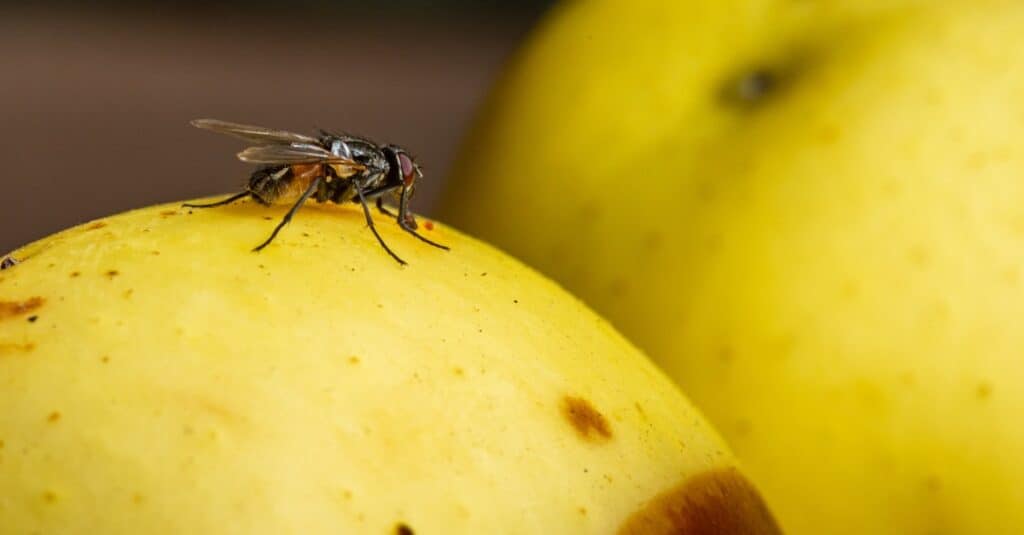
©iStock.com/heckepics
Bottle Flies
The first insects to assault a dead animal’s body are typically blowflies, also known as bottle flies. Fresh or rotting flesh is what bottle flies prefer to consume most. They are also renowned for nesting within animal carcasses to deposit their eggs. Adult blow flies also eat waste, or feces, in addition to these things. Blowflies live on rotting flesh and other nearby decomposing materials while they are still larvae.
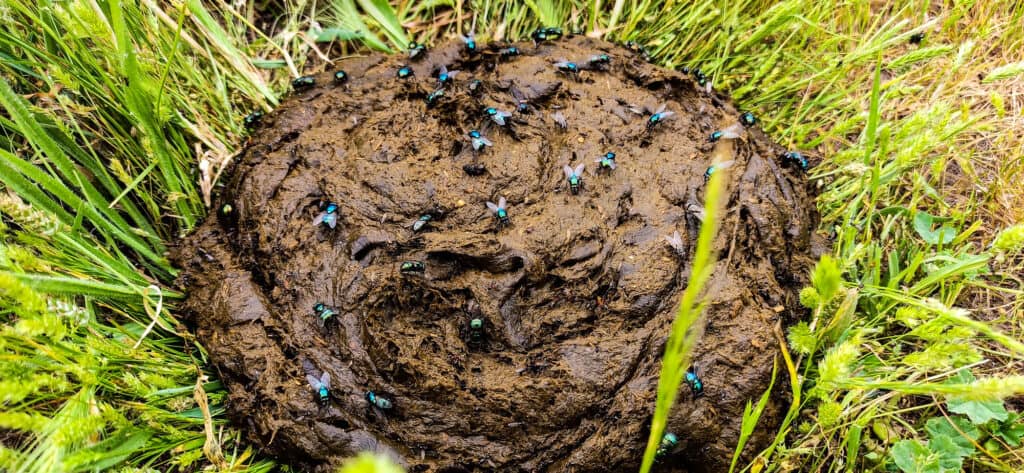
©iStock.com/Tirex
Cluster Flies
In general, nectar from flowers and other plant juices are consumed by cluster flies. In its absence, they eat the organic stuff that is degrading. In soil fissures, particularly wet ones, cluster flies lay their eggs. Cluster flies’ larval stages display parasitic behavior. Earthworms’ bodily cavities are invaded by cluster fly larvae, which then feast on the worms.
Fruit Flies
Yeast cells that develop on decaying fruits and other sweet things are the typical food source for fruit flies. Adult fruit flies also eat fermenting liquids and alcoholic drinks in addition to this. Among fruits, they truly enjoy bananas. Overripe fruit’s skin is pierced by adult fruit flies, who then lay their eggs there. Fruit fly larvae eat the decaying fruit as well.
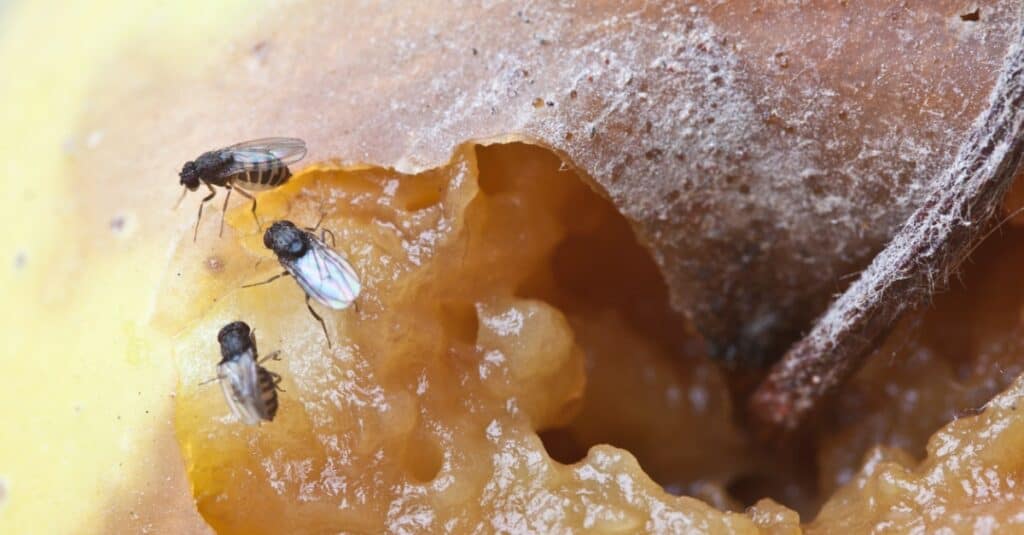
©iStock.com/hoja_viva
Drain Flies
Drain flies consume sewage and decaying organic waste. Additionally lacking chewing mouth parts, drain flies feed on the slime and semisolid gelatinous materials found in the drains.
The larvae of drain flies eat sediments, decomposing plants, microscopic plants, and creatures that live in the drains.

©Cherdchai Chaivimol/Shutterstock.com
Crane Flies
The average lifespan of adult crane flies is only a few days. As a result, once they enter maturity, they spend the majority of their time mating and egg-laying and are hardly ever seen eating. They do, however, occasionally consume flower nectar and pollen.
But crane fly larvae consume a lot of food.
Larvae of crane flies may consume everything, even the roots of foliage, and tiny insects.
Some species of crane flies are herbivorous, and their larval stages involve feeding on rotting wood, fungus, flowers, seedlings, and plant roots.
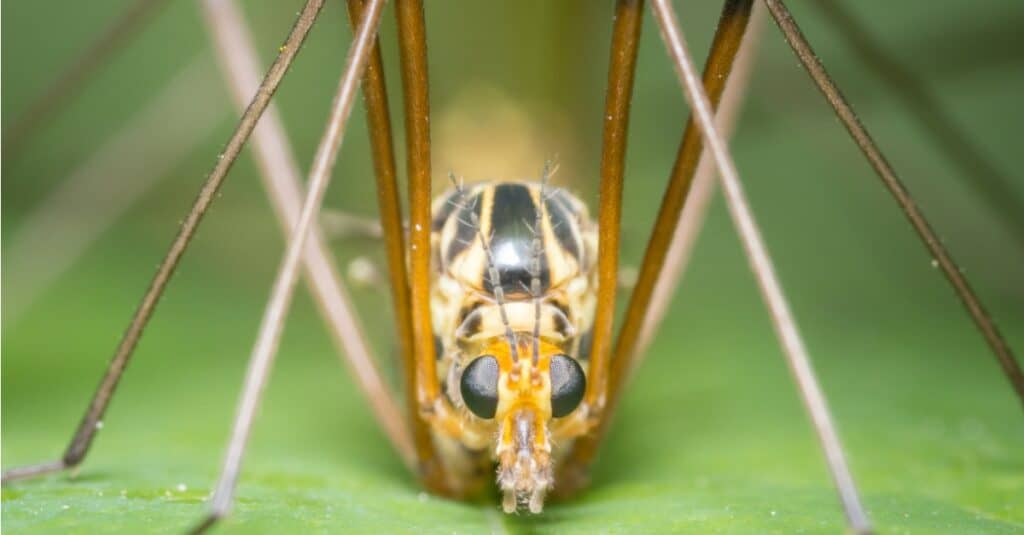
©iStock.com/peter bocklandt
Horse Flies
One of the rare fly species with mouth parts capable of tearing and cutting is the horse fly. A horse fly’s bite hurts tremendously. Horse flies can rip flesh with their scissor-like jaws.
Male horse flies typically eat honeydew, plant juices, nectar from flowers, and other liquids found in plants.
However, female horse flies require a blood meal to obtain adequate protein for egg-laying.
Horse flies bite livestock or people in order to obtain a blood meal. The little insects that are nearby the breeding location are what the horse fly larvae eat.
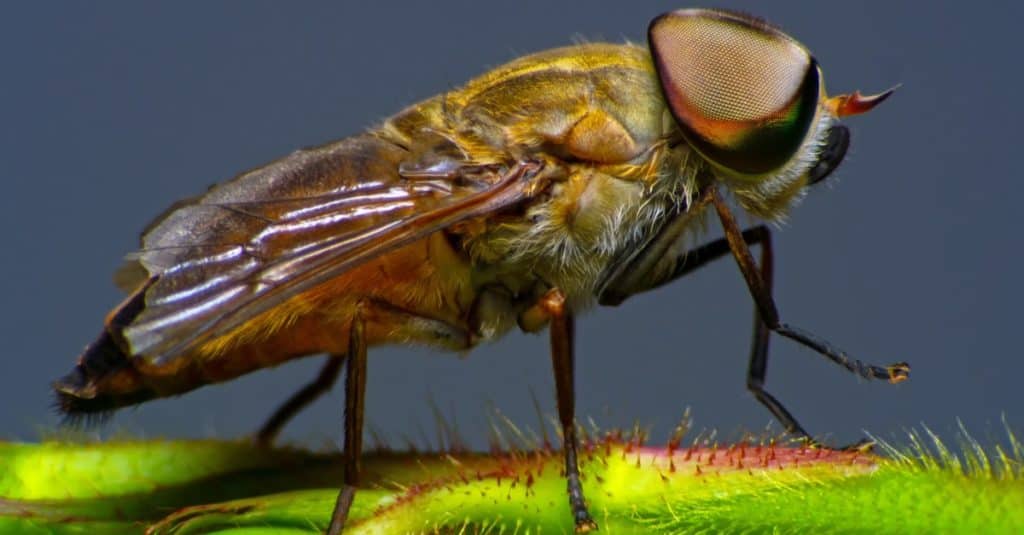
©ploypemuk/Shutterstock.com
Fly Digestion Facts
Some flies strive to lower the liquid content of the food they have already consumed in order to squeeze more food into their stomachs. To slightly dry it out, they spew food into bubbles of vomit. They can consume this meal that is more saturated after some water has evaporated.
Flies use sensors on their feet when they touch down to determine whether they are on something nourishing. A fly may have been seen brushing its legs together, similar to a person who is about to consume a meal.
This process, known as grooming, involves the fly effectively washing itself. It may also clean the taste receptors on the filaments and fine hair on its feet to improve its understanding of the contents of the food it has settled on.
Up Next
- Drain Fly vs Fruit Fly: Key Differences Explained
- Fly Lifespan: How Long do Flies Live?
- 10 Incredible Fly Facts
- Do House Flies Poop?
The post What Do Flies Eat? appeared first on AZ Animals.
from Animal News, Facts, Rankings, and More! - AZ Animals https://ift.tt/BGWqQAh